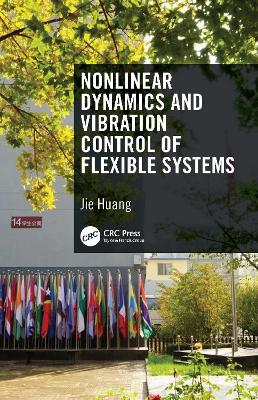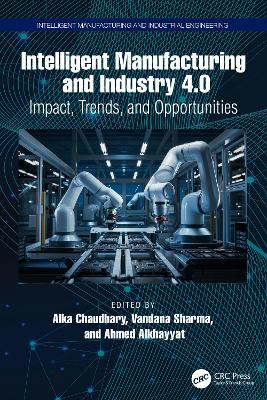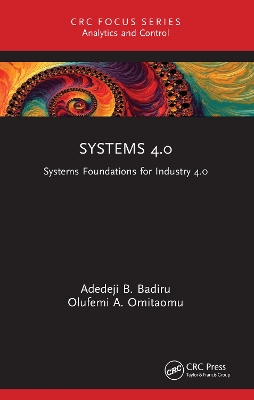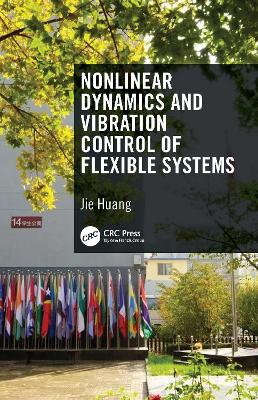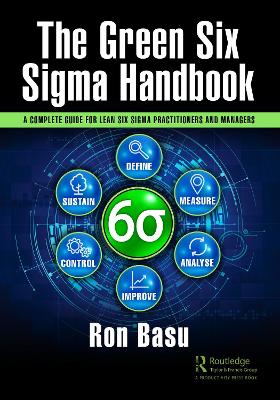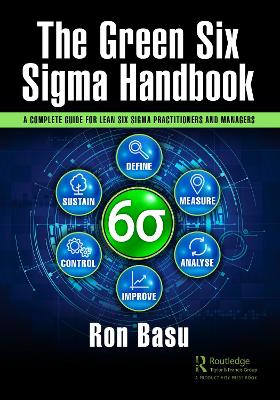Intelligent Prognostics for Engineering Systems with Machine Learning Techniques
 portes grátis
portes grátis
Intelligent Prognostics for Engineering Systems with Machine Learning Techniques
Yadav, Om Prakash; Badhotiya, Gaurav Kumar; Soni, Gunjan; Ram, Mangey
Taylor & Francis Ltd
12/2024
246
Mole
9781032562971
Pré-lançamento - envio 15 a 20 dias após a sua edição
Descrição não disponível.
Chapter 1: A Bibliometric Analysis of Research on Tool Condition Monitoring
Jeetesh Sharma, M.L. Mittal, Gunjan Soni
1.1 Introduction
1.2 Data Collection and Research Methodology
1.3 Bibliometric Analysis
1.4 Conclusion
Chapter 2: Predicting Restoration Factor for Different Maintenance Types
Neeraj Kumar Goyal, Tapash Kumar Das, Namrata Mohanty
2.1 Introduction
2.2 Proposed Model
2.3 Case Study
2.4 Conclusion
Chapter 3: Measurement and Modeling of Cutting Tool Temperature during Dry Turning Operation of DSS
P. Kumar, O.P.Yadav
3.1. Introduction
3.2. Materials and methods
3.3. Results and discussion
3.4. Empirical Modeling
3.5. Conclusions
Chapter 4: Leaf disease recognition: Comparative Analysis of Various Convolutional Neural Network Algorithms
Vikas Kumar Roy, Ganpati Kumar Roy, Vasu Thakur, Nikhil Baliyan, Nupur Goyal
4.1 Introduction
4.2 Literature Review
4.3 Dataset
4.4 Methodology
4.5 Results and discussion
4.6 Conclusion
Chapter 5: On the Validity of Parallel Plate Assumption for Modelling Leakage Flow past Hydraulic Piston-Cylinder Configurations
Rishabh Gupta, Jatin Prakash, Ankur Miglani, Pavan Kumar Kankar
5.1 Introduction
5.2 The Leakage Flow Models
5.3 Results and discussion
5.4 Concluding remarks
Chapter 6: Development of a hybrid MGWO-optimized Support vector machine approach for tool wear estimation
N. Rajpurohit, Jeetesh Sharma, M. L. Mittal
6.1 Introduction
6.2 Materials and methods
6.3 Results and discussion
6.4 Conclusion and future work
Chapter 7: The Energy Consumption Optimization Using Machine Learning Technique in Electrical Arc Furnaces (EAF)
Rishabh Dwivedi, Ashutosh Mishra, Devesh Kumar, Amitkumar Patil
7.1 Introduction:
7.2 Literature Review
7.3 Methodology
7.4 Result and Discussion
7.4.1Managerial Implications
7.5 Conclusion Limitations and Future scope
Chapter 8: PID based ANN control of Dynamic Systems
A. Kharola
8.1 Introduction
8.2 Mathematical modeling of inverted double pendulum
8.3 PID based ANN control of Inverted double pendulum System
8.4 Simulation & Results Comparison
8.5 Conclusion
Chapter 9: Fatigue Damage Prognosis of Offshore Piping
A. Keprate, N. Bagalkot
9.1 Introduction
9.2 Understanding Piping Fatigue
9.3 Fatigue Damage Prognosis
9.4 Case Study
9.5 Conclusion
Chapter 10: Minimization of Joint Angle Jerk for Industrial Manipulator based on Prognostic Behaviour
Vaishnavi J, Bharat Singh, Ankit Vijayvargiya, Rajesh Kumar
10.1 Introduction
10.2 System Description
10.3 Algorithms and Objective functions
10.3.1 Objective Function
10.3.2 Modified Objective Function
10.3.3 Particle Swarm Optimization (PSO)
10.4 Results and Discussion
10.5 Conclusion
Chapter 11: Estimation of bearing remaining useful life using exponential degradation model and random forest algorithm
Pawan, Jeetesh Sharma, M. L. Mittal
11.1 Introduction
11.2 The proposed RUL estimate approach
11.3 Experimental result and Discussion
11.4 Conclusion
Chapter 12: Machine Learning-based Predictive Maintenance for Diagnostics and Prognostics of Engineering Systems
Ramnath Prabhu Bam, Rajesh S. Prabhu Gaonkar, Clint Pazhayidam George
12.1 Introduction and Overview
12.2 Diagnostics and Prognostics based on Predictive Maintenance
12.3 Machine Learning for Predictive Maintenance
12.4 Machine learning-based Predictive Maintenance in Engineering Systems
12.5 Summary
Jeetesh Sharma, M.L. Mittal, Gunjan Soni
1.1 Introduction
1.2 Data Collection and Research Methodology
1.3 Bibliometric Analysis
1.4 Conclusion
Chapter 2: Predicting Restoration Factor for Different Maintenance Types
Neeraj Kumar Goyal, Tapash Kumar Das, Namrata Mohanty
2.1 Introduction
2.2 Proposed Model
2.3 Case Study
2.4 Conclusion
Chapter 3: Measurement and Modeling of Cutting Tool Temperature during Dry Turning Operation of DSS
P. Kumar, O.P.Yadav
3.1. Introduction
3.2. Materials and methods
3.3. Results and discussion
3.4. Empirical Modeling
3.5. Conclusions
Chapter 4: Leaf disease recognition: Comparative Analysis of Various Convolutional Neural Network Algorithms
Vikas Kumar Roy, Ganpati Kumar Roy, Vasu Thakur, Nikhil Baliyan, Nupur Goyal
4.1 Introduction
4.2 Literature Review
4.3 Dataset
4.4 Methodology
4.5 Results and discussion
4.6 Conclusion
Chapter 5: On the Validity of Parallel Plate Assumption for Modelling Leakage Flow past Hydraulic Piston-Cylinder Configurations
Rishabh Gupta, Jatin Prakash, Ankur Miglani, Pavan Kumar Kankar
5.1 Introduction
5.2 The Leakage Flow Models
5.3 Results and discussion
5.4 Concluding remarks
Chapter 6: Development of a hybrid MGWO-optimized Support vector machine approach for tool wear estimation
N. Rajpurohit, Jeetesh Sharma, M. L. Mittal
6.1 Introduction
6.2 Materials and methods
6.3 Results and discussion
6.4 Conclusion and future work
Chapter 7: The Energy Consumption Optimization Using Machine Learning Technique in Electrical Arc Furnaces (EAF)
Rishabh Dwivedi, Ashutosh Mishra, Devesh Kumar, Amitkumar Patil
7.1 Introduction:
7.2 Literature Review
7.3 Methodology
7.4 Result and Discussion
7.4.1Managerial Implications
7.5 Conclusion Limitations and Future scope
Chapter 8: PID based ANN control of Dynamic Systems
A. Kharola
8.1 Introduction
8.2 Mathematical modeling of inverted double pendulum
8.3 PID based ANN control of Inverted double pendulum System
8.4 Simulation & Results Comparison
8.5 Conclusion
Chapter 9: Fatigue Damage Prognosis of Offshore Piping
A. Keprate, N. Bagalkot
9.1 Introduction
9.2 Understanding Piping Fatigue
9.3 Fatigue Damage Prognosis
9.4 Case Study
9.5 Conclusion
Chapter 10: Minimization of Joint Angle Jerk for Industrial Manipulator based on Prognostic Behaviour
Vaishnavi J, Bharat Singh, Ankit Vijayvargiya, Rajesh Kumar
10.1 Introduction
10.2 System Description
10.3 Algorithms and Objective functions
10.3.1 Objective Function
10.3.2 Modified Objective Function
10.3.3 Particle Swarm Optimization (PSO)
10.4 Results and Discussion
10.5 Conclusion
Chapter 11: Estimation of bearing remaining useful life using exponential degradation model and random forest algorithm
Pawan, Jeetesh Sharma, M. L. Mittal
11.1 Introduction
11.2 The proposed RUL estimate approach
11.3 Experimental result and Discussion
11.4 Conclusion
Chapter 12: Machine Learning-based Predictive Maintenance for Diagnostics and Prognostics of Engineering Systems
Ramnath Prabhu Bam, Rajesh S. Prabhu Gaonkar, Clint Pazhayidam George
12.1 Introduction and Overview
12.2 Diagnostics and Prognostics based on Predictive Maintenance
12.3 Machine Learning for Predictive Maintenance
12.4 Machine learning-based Predictive Maintenance in Engineering Systems
12.5 Summary
Este título pertence ao(s) assunto(s) indicados(s). Para ver outros títulos clique no assunto desejado.
Prognostics and Health Management;Reliability Engineering;Condition Monitoring;System Modeling;GWO;Signal Processing;TCM;RUL Estimation;RUL Prediction;Cutting Tool;Annular Flow Model;Search Space;SVR;Tool Flank Wear;Leakage Flow Rate;PSO;Extreme Learning Machine;Virtual Age Model;Axial Piston Pump;Leakage Flow;Annular Clearance;Flank Wear;Cutting Speed;Power Consumption;Double Inverted Pendulum;Orientation Error;RF Classifier;Parallel Plate Model;Ann Controller;Leakage Fault
Chapter 1: A Bibliometric Analysis of Research on Tool Condition Monitoring
Jeetesh Sharma, M.L. Mittal, Gunjan Soni
1.1 Introduction
1.2 Data Collection and Research Methodology
1.3 Bibliometric Analysis
1.4 Conclusion
Chapter 2: Predicting Restoration Factor for Different Maintenance Types
Neeraj Kumar Goyal, Tapash Kumar Das, Namrata Mohanty
2.1 Introduction
2.2 Proposed Model
2.3 Case Study
2.4 Conclusion
Chapter 3: Measurement and Modeling of Cutting Tool Temperature during Dry Turning Operation of DSS
P. Kumar, O.P.Yadav
3.1. Introduction
3.2. Materials and methods
3.3. Results and discussion
3.4. Empirical Modeling
3.5. Conclusions
Chapter 4: Leaf disease recognition: Comparative Analysis of Various Convolutional Neural Network Algorithms
Vikas Kumar Roy, Ganpati Kumar Roy, Vasu Thakur, Nikhil Baliyan, Nupur Goyal
4.1 Introduction
4.2 Literature Review
4.3 Dataset
4.4 Methodology
4.5 Results and discussion
4.6 Conclusion
Chapter 5: On the Validity of Parallel Plate Assumption for Modelling Leakage Flow past Hydraulic Piston-Cylinder Configurations
Rishabh Gupta, Jatin Prakash, Ankur Miglani, Pavan Kumar Kankar
5.1 Introduction
5.2 The Leakage Flow Models
5.3 Results and discussion
5.4 Concluding remarks
Chapter 6: Development of a hybrid MGWO-optimized Support vector machine approach for tool wear estimation
N. Rajpurohit, Jeetesh Sharma, M. L. Mittal
6.1 Introduction
6.2 Materials and methods
6.3 Results and discussion
6.4 Conclusion and future work
Chapter 7: The Energy Consumption Optimization Using Machine Learning Technique in Electrical Arc Furnaces (EAF)
Rishabh Dwivedi, Ashutosh Mishra, Devesh Kumar, Amitkumar Patil
7.1 Introduction:
7.2 Literature Review
7.3 Methodology
7.4 Result and Discussion
7.4.1Managerial Implications
7.5 Conclusion Limitations and Future scope
Chapter 8: PID based ANN control of Dynamic Systems
A. Kharola
8.1 Introduction
8.2 Mathematical modeling of inverted double pendulum
8.3 PID based ANN control of Inverted double pendulum System
8.4 Simulation & Results Comparison
8.5 Conclusion
Chapter 9: Fatigue Damage Prognosis of Offshore Piping
A. Keprate, N. Bagalkot
9.1 Introduction
9.2 Understanding Piping Fatigue
9.3 Fatigue Damage Prognosis
9.4 Case Study
9.5 Conclusion
Chapter 10: Minimization of Joint Angle Jerk for Industrial Manipulator based on Prognostic Behaviour
Vaishnavi J, Bharat Singh, Ankit Vijayvargiya, Rajesh Kumar
10.1 Introduction
10.2 System Description
10.3 Algorithms and Objective functions
10.3.1 Objective Function
10.3.2 Modified Objective Function
10.3.3 Particle Swarm Optimization (PSO)
10.4 Results and Discussion
10.5 Conclusion
Chapter 11: Estimation of bearing remaining useful life using exponential degradation model and random forest algorithm
Pawan, Jeetesh Sharma, M. L. Mittal
11.1 Introduction
11.2 The proposed RUL estimate approach
11.3 Experimental result and Discussion
11.4 Conclusion
Chapter 12: Machine Learning-based Predictive Maintenance for Diagnostics and Prognostics of Engineering Systems
Ramnath Prabhu Bam, Rajesh S. Prabhu Gaonkar, Clint Pazhayidam George
12.1 Introduction and Overview
12.2 Diagnostics and Prognostics based on Predictive Maintenance
12.3 Machine Learning for Predictive Maintenance
12.4 Machine learning-based Predictive Maintenance in Engineering Systems
12.5 Summary
Jeetesh Sharma, M.L. Mittal, Gunjan Soni
1.1 Introduction
1.2 Data Collection and Research Methodology
1.3 Bibliometric Analysis
1.4 Conclusion
Chapter 2: Predicting Restoration Factor for Different Maintenance Types
Neeraj Kumar Goyal, Tapash Kumar Das, Namrata Mohanty
2.1 Introduction
2.2 Proposed Model
2.3 Case Study
2.4 Conclusion
Chapter 3: Measurement and Modeling of Cutting Tool Temperature during Dry Turning Operation of DSS
P. Kumar, O.P.Yadav
3.1. Introduction
3.2. Materials and methods
3.3. Results and discussion
3.4. Empirical Modeling
3.5. Conclusions
Chapter 4: Leaf disease recognition: Comparative Analysis of Various Convolutional Neural Network Algorithms
Vikas Kumar Roy, Ganpati Kumar Roy, Vasu Thakur, Nikhil Baliyan, Nupur Goyal
4.1 Introduction
4.2 Literature Review
4.3 Dataset
4.4 Methodology
4.5 Results and discussion
4.6 Conclusion
Chapter 5: On the Validity of Parallel Plate Assumption for Modelling Leakage Flow past Hydraulic Piston-Cylinder Configurations
Rishabh Gupta, Jatin Prakash, Ankur Miglani, Pavan Kumar Kankar
5.1 Introduction
5.2 The Leakage Flow Models
5.3 Results and discussion
5.4 Concluding remarks
Chapter 6: Development of a hybrid MGWO-optimized Support vector machine approach for tool wear estimation
N. Rajpurohit, Jeetesh Sharma, M. L. Mittal
6.1 Introduction
6.2 Materials and methods
6.3 Results and discussion
6.4 Conclusion and future work
Chapter 7: The Energy Consumption Optimization Using Machine Learning Technique in Electrical Arc Furnaces (EAF)
Rishabh Dwivedi, Ashutosh Mishra, Devesh Kumar, Amitkumar Patil
7.1 Introduction:
7.2 Literature Review
7.3 Methodology
7.4 Result and Discussion
7.4.1Managerial Implications
7.5 Conclusion Limitations and Future scope
Chapter 8: PID based ANN control of Dynamic Systems
A. Kharola
8.1 Introduction
8.2 Mathematical modeling of inverted double pendulum
8.3 PID based ANN control of Inverted double pendulum System
8.4 Simulation & Results Comparison
8.5 Conclusion
Chapter 9: Fatigue Damage Prognosis of Offshore Piping
A. Keprate, N. Bagalkot
9.1 Introduction
9.2 Understanding Piping Fatigue
9.3 Fatigue Damage Prognosis
9.4 Case Study
9.5 Conclusion
Chapter 10: Minimization of Joint Angle Jerk for Industrial Manipulator based on Prognostic Behaviour
Vaishnavi J, Bharat Singh, Ankit Vijayvargiya, Rajesh Kumar
10.1 Introduction
10.2 System Description
10.3 Algorithms and Objective functions
10.3.1 Objective Function
10.3.2 Modified Objective Function
10.3.3 Particle Swarm Optimization (PSO)
10.4 Results and Discussion
10.5 Conclusion
Chapter 11: Estimation of bearing remaining useful life using exponential degradation model and random forest algorithm
Pawan, Jeetesh Sharma, M. L. Mittal
11.1 Introduction
11.2 The proposed RUL estimate approach
11.3 Experimental result and Discussion
11.4 Conclusion
Chapter 12: Machine Learning-based Predictive Maintenance for Diagnostics and Prognostics of Engineering Systems
Ramnath Prabhu Bam, Rajesh S. Prabhu Gaonkar, Clint Pazhayidam George
12.1 Introduction and Overview
12.2 Diagnostics and Prognostics based on Predictive Maintenance
12.3 Machine Learning for Predictive Maintenance
12.4 Machine learning-based Predictive Maintenance in Engineering Systems
12.5 Summary
Este título pertence ao(s) assunto(s) indicados(s). Para ver outros títulos clique no assunto desejado.
Prognostics and Health Management;Reliability Engineering;Condition Monitoring;System Modeling;GWO;Signal Processing;TCM;RUL Estimation;RUL Prediction;Cutting Tool;Annular Flow Model;Search Space;SVR;Tool Flank Wear;Leakage Flow Rate;PSO;Extreme Learning Machine;Virtual Age Model;Axial Piston Pump;Leakage Flow;Annular Clearance;Flank Wear;Cutting Speed;Power Consumption;Double Inverted Pendulum;Orientation Error;RF Classifier;Parallel Plate Model;Ann Controller;Leakage Fault

